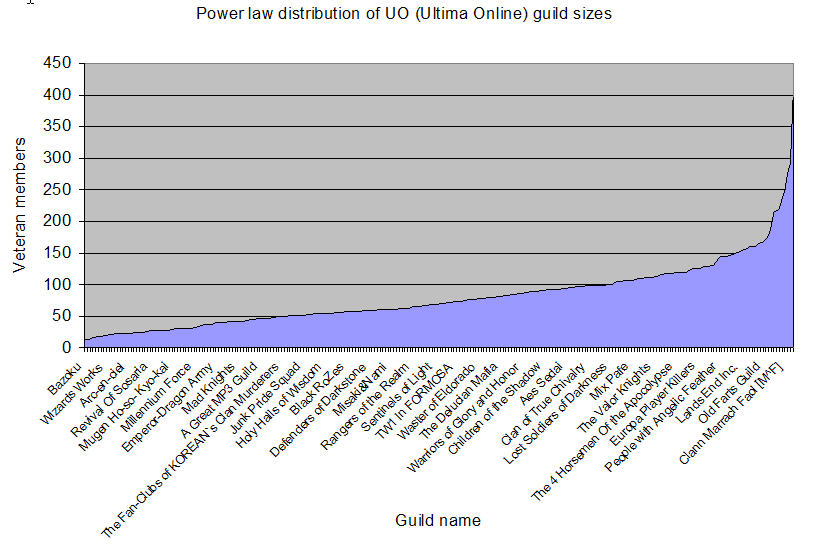A blog on social software, collaboration, trust, security, privacy, and internet tools by Christopher Allen.

We often think of communities as organic creatures, which come into existence and grow on their own. However, the truth is they are fragile blossoms. Although many communities surely germinate and bloom on their own, purposefully creating communities can take a tremendous amount of hard work, and one factor their success ultimately depends upon is their numbers.
If a community is too small you'll often have insufficient critical mass to sustain it.

In my initial blog entry on the Dunbar Number I presented some statistics on group sizes based on the online game Ultimata Online. In it you could clearly see the power-law (pareto) curve, with diminishing returns at around 150, with most groups being 60 in size:
More recently, Nick Yee and other researchers at the PlayOn Blog have been researching the behaviors of players in the popular World of Warcraft online game.
I have now had CEOs of three different social networks send me emails asking me to compare Orkut to their service. I've not had a chance to dig deeply into good answers for each specific one, but I did have some general advice that I wanted to offer given my recent experiences with Orkut.com, and my evaluation and followup on various social networking services in December.
Privacy First, be extremely careful about privacy issues.
 We often think of communities as organic creatures, which come into existence and grow on their own. However, the truth is they are fragile blossoms. Although many communities surely germinate and bloom on their own, purposefully creating communities can take a tremendous amount of hard work, and one factor their success ultimately depends upon is their numbers.
If a community is too small you'll often have insufficient critical mass to sustain it.
We often think of communities as organic creatures, which come into existence and grow on their own. However, the truth is they are fragile blossoms. Although many communities surely germinate and bloom on their own, purposefully creating communities can take a tremendous amount of hard work, and one factor their success ultimately depends upon is their numbers.
If a community is too small you'll often have insufficient critical mass to sustain it.